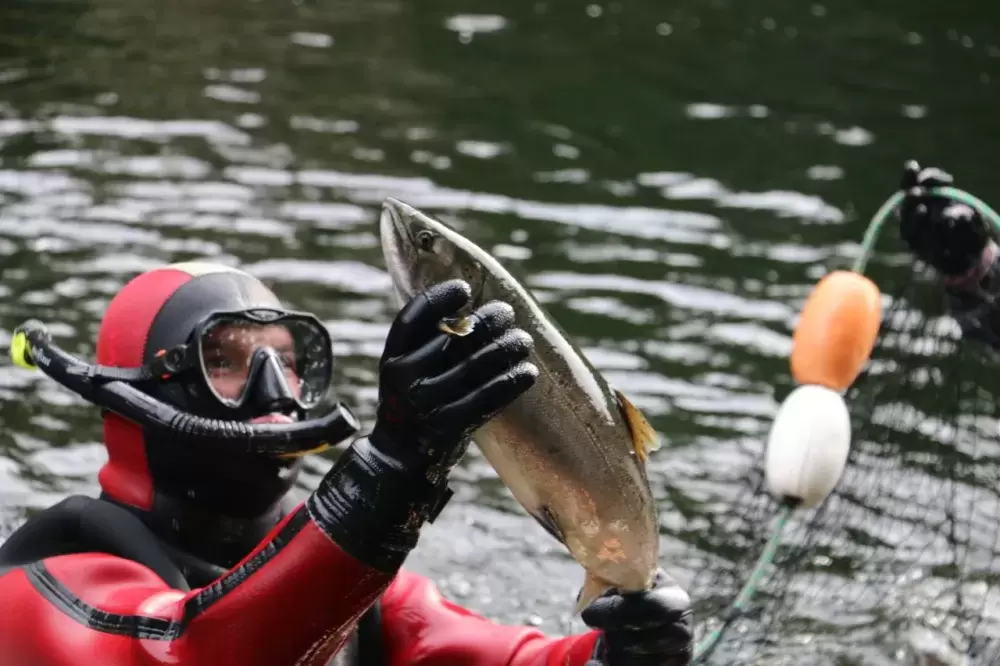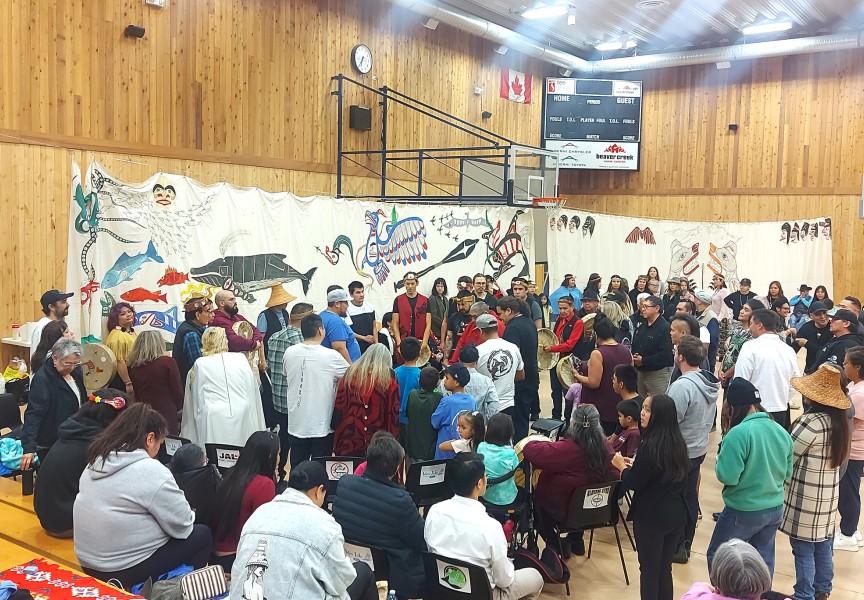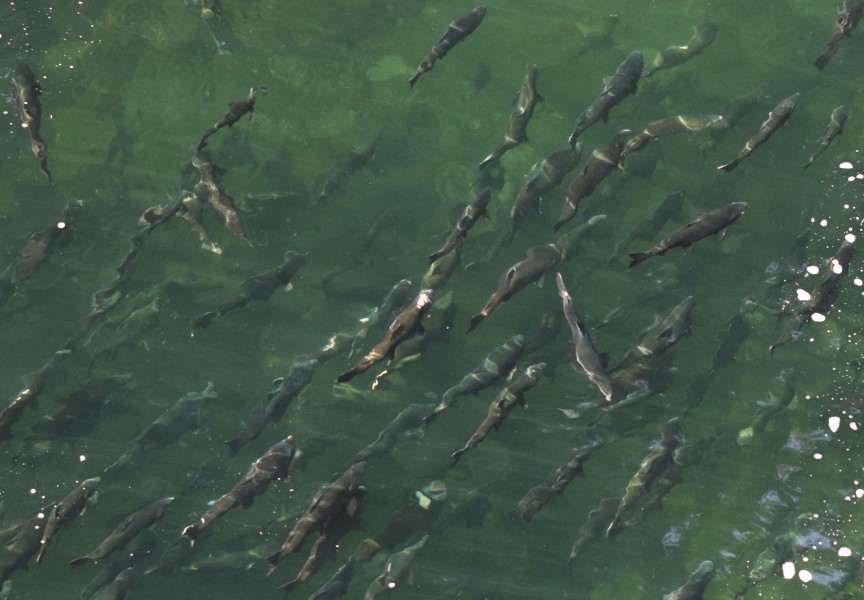This is the first of a 3-part Ha-Shilth-Sa series on west coast salmon harvest, hatcheries and habitat.
A spring deadline has passed for re-establishing Nuu-chah-nulth fishing rights long denied by the Canadian government, stalling action that would put more First Nation boats back on the water.
Just six months ago, the five T’aaq-wiihak nations (Ahousaht, Ehattesaht/Chinehkint, Hesquiaht, Tla-o-qui-aht and Mowachaht/Muchalaht) marked the 10th anniversary of Ahousaht Nation v. Canada, the landmark B.C. Supreme Court decision acknowledging their Indigenous right to fish commercially.
Counting on an agreement with Ottawa in time for the salmon fishing season, they sent Prime Minister Justin Trudeau a set of requests, holding the government to account. The short list of concrete actions was designed to overcome inertia after a decade of delays from successive court appeals by the government.
“This is absolutely unacceptable,” NTC President Judith Sayers said in November. “If this were anyone else, the government would have settled with them long ago. This means 10 years of lost revenue to our fishermen and a denial of our right to a commercial fishery.”
“We should not have to fight for a way of life that our ancestors carried on for thousands of years,” added Wickaninnish (Cliff Atleo Sr.), lead negotiator for Ahousaht. “Through government policies, our people have been systematically forced off the waters.”
The hard-fought goal seemed within grasp until COVID-19 suddenly emerged. Still, Atleo remains confident a livelihood can be achieved.
“Definitely,” he said when asked of the likelihood of an agreement on the horizon. “We’re working with the federal government on what they call ‘reconciliation.’ It’s in the works and still being negotiated. It got stretched out more because of what we are dealing with globally.”
Management before contact
Fishing is in Atleo’s genes as it is with so many others who grew up Nuu-chah-nulth on the west coast. He recalls the salmon canneries that used to dot the coast, memories of a thriving industry with widespread Nuu-chah-nulth participation in commercial fisheries. Few can make a go of it now.
“That speaks to the level of resources available for harvesting at that time,” he said. “It’s always been poor management. They have never been accountable to us. There’s a built-in thing we’re dealing with, brought over from Europe — racism. We’re still dealing with the racism thing, no question. The pandemic has brought it out even more.”
With so many B.C. salmon stocks imperiled, accountability and accurate counts — staples of reliable fisheries management —become more essential than ever.
“This right that existed before contact, in my opinion, involved management,” Atleo said. “We are going to be negotiating that along with what we want to re-establish as a way of life for our people.”
Strands of Indigenous culture and wild salmon are so tightly interwoven they are virtually indistinguishable. Within that relationship lies a possible path forward for restoring wild salmon stocks despite multiple challenges.
“This is a relationship rather than a commodity,” said Eric Angel, manager of Uu-a-thluk, the NTC’s fisheries department. “That really shapes how you think about it.”
Building on relationship
The distinct characteristics of family salmonidae, once so richly abundant they teemed in rivers around the world, spawned that unique relationship. They are anadromous, navigating a long and difficult journey in their short lifespans, linking together distant marine and terrestrial ecosystems. They force people to think about the interconnectedness of the nature, essence of the Nuu-chah-nulth world view, “heshook-ish tsawalk.”
“If we think of it as a relationship, what can we do to support salmon and help them for the changes to come?” Angel asked. “Only after that should we ask, what can the salmon give us?”
Instead, an entrenched system of resource extraction prevails that encourages competition and discourages co-operation vital to rebuild stocks and adapt to environmental changes.
“We are managing the stocks to extinction,” Angel said. “Nobody wants to say it, but it’s true.”
“We don’t want to just look at the allocation policy, we want to look at the larger sense of it,” he added, questioning DFO’s hierarchical, top-down approach. “It’s just a recipe for maintaining the status quo.”
With the established practice of fishery roundtables on the west coast, there is solid rationale for putting fisheries co-management into practice here.
“We have tried to make the case to DFO,” Angel said. “Why not try something with the Nuu-chah-nulth in terms of allowing local decision-making, a collaborative approach?”
The T’aaq-wiihak court triumph bolsters that argument.
“That’s another reason why the west coast would make a good case for trying a new way,” Angel said. “A lot of ingredients are here on the west coast of the Island to do something different.”
But there is reason for optimism, based on a recent virtual meeting Angel had with DFO personnel. Since the COVID-19 pandemic began in March, this was the first meeting of the Joint Technical Working Group, formed to foster collaborative fisheries management between Nuu-chah-nulth and the federal department.
“On the call we found out that DFO is committing significant resources to working closely with Nuu-chah-nulth to develop a chinook rebuilding plan,” he said. “This is the first real sign of progress we’ve seen in quite a while.”
“There is talk of dedicating a full-time person to leading this for a year,” added Angel. “That would make a huge difference.”
Angel expects that the working group will meet monthly from now on.
The key to rebuilding salmon, specifically west coast Vancouver Island chinook stocks, lies with harvest management reform, said Uu-a-thluk northern region biologist Roger Dunlop. Ocean warming and habitat damage contribute to stock decline, yet it’s overfishing that represents a chance for recovery, he maintains.
‘The only solution'
“Harvest is the only solution we can control with immediate direct effects. All others will take time and are unproven,” Dunlop said.
“We can’t change climate-change inertia in the oceans,” he continued. “We can’t fix the habitat that is damaged. It’s too expensive. We can’t afford it and when we do it, it generally fails. Quite often the improvement project reduces productivity.”
Harvest reduction reform is essential, a fundamental shift to sustainable, terminal salmon fisheries at rivers of origin. NTC has put DFO on notice that exploitation of west coast Vancouver Island chinook is on the table for 2021, Dunlop said.
“This is the only solution,” he stressed. Terminal fisheries would resemble those of pre-contact times, allowing closer and more effective management in the 21st century when challenges to the salmon seem more abundant than the salmon themselves.
Dunlop points to figures indicating west coast chinook are hammered through combined U.S. and Canadian catches, as much as three times the exploitation rate set by DFO’s integrated fisheries management plan (IFMP). Older four and five-year-olds — especially females as more older fish are female — are harvested more intensively, resulting in a “genetic drift,” he noted.
“Over time, the selection process is to make smaller fish,” Dunlop said. “And 60-70 per cent of the chinook coming back are males. Very few females are getting through.”
The remedy is to reduce that fishing pressure, adopt “chinook conservation corridors” and let more big ones back to the rivers to reproduce and employ more effective counting, marking and monitoring, he said.
“This is the whole coastwide allocation dilemma,” Dunlop said. "Basically, we have set the goalposts in the IFMP that do not include all of the fisheries on the indicator stock."
“DFO’s current IFMP could be improved by actually integrating the conservation of west coast Vancouver Island chinook within B.C.’s fisheries and replacing the current IFMP target exploitation rates with a sustainable rate for the wild fish,” he added.
The plan is to re-establish a self-reliance once integral to Nuu-chah-nulth life, Atleo said. It’s also about wanting to demonstrate the value in local knowledge, skills and ability: “By actually building on our capacity to manage and actually rebuild the stocks, I think we can do things in a way that convinces others, ‘My God, I think those guys know what they’re talking about’.”







